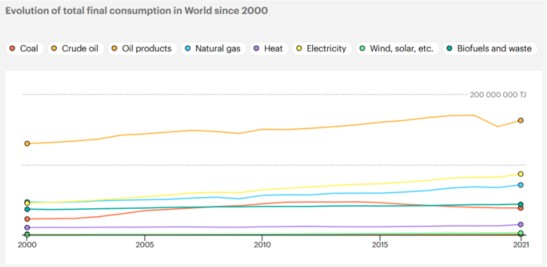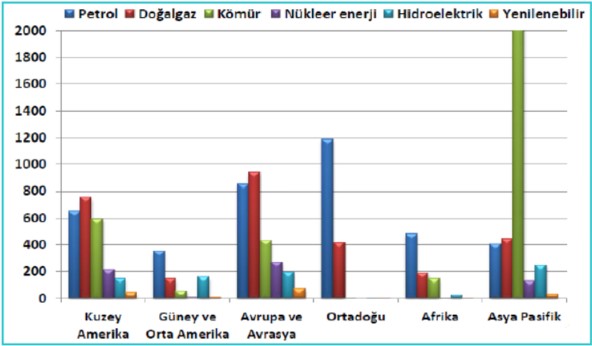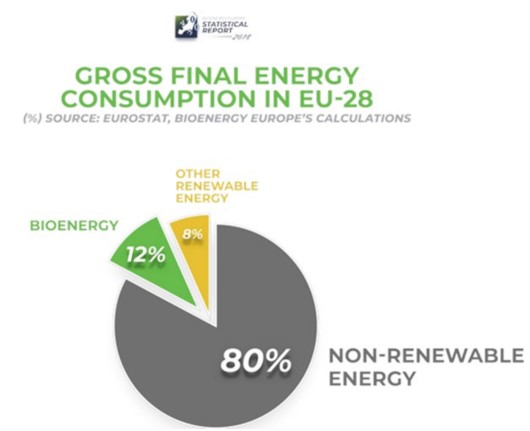- Definition and Types of Energy
- Myths And Misconceptions About Energy
- The Relationship Between Energy and Environment
- Climate Change and Carbon Footprint
- Greenhouse Gas Effect
- The Role of Human-Induced Greenhouse Gases and Energy Consumption
- Energy Efficiency and Sustainability
- Renewable Energy Sources and Future Perspectives
- Play and Learn
- Solar Energy Conversions
- Solar Energy Worldwide
- Solar Energy in Partner Countries
- Positive and Negative Impacts
- Technologies for Harnessing Solar Energy
- Solar thermal energy technologies and applications
- Electricity Generation Methods
- Passive Heating and Cooling of Residences with the Sun
- Concentrator solar power (CSP) systems and electricity generation
- Systems and Applications That Generate Electricity directly from solar rays
- Photovoltaic Cells and Panels
- Domestic PV Systems
- Off-Grid PV Systems
- Hybrid Connected Systems
- Materials Used in PV Cells
- Play and Learn
Non-Renewable Energy Use in Global and European
Non-renewable energy sources remain the backbone of global energy systems, accounting for a significant portion of the world's energy consumption. Despite increasing awareness of their environmental impacts, the reliance on fossil fuels and nuclear energy persists due to their energy density, reliability, and existing infrastructure.
Non-Renewable Energy Use in Global
Globally, fossil fuels dominate the energy mix, contributing approximately 80% of total primary energy consumption Ref . Coal, oil, and natural gas are widely used across industrial, transportation, and residential sectors. Coal consumption is particularly high in emerging economies such as China and India, which together account for over 65% of global coal use. Oil remains critical for transportation, with the United States and Saudi Arabia among the largest consumers. Natural gas usage has seen a steady rise due to its lower emissions compared to coal, with Russia and the United States leading in production and consumption.
Nuclear energy, while accounting for a smaller share of global energy consumption, plays a crucial role in countries like the United States, France, and China. It is primarily used for electricity generation, offering a low-carbon alternative to fossil fuels.
Non-renewable energy sources remain the most widely used energy sources globally. As of 2022, fossil fuels account for over 80% of global energy consumption. However, due to their environmental impact and the risk of depletion, there is a global trend towards reducing dependency on these sources.





Non-Renewable Energy Use in Europa
In Europe, non-renewable energy consumption has been gradually declining as countries transition to renewable energy sources and implement stringent climate policies. Nevertheless, fossil fuels still make up a substantial part of the energy mix. According to Eurostat (2021), oil accounts for approximately 34% of the EU's energy consumption, followed by natural gas at 25% and coal at 13%. Despite these figures, the EU has significantly reduced its coal usage over the past two decades, particularly in Germany and Poland, where coal was historically a dominant energy source.
Nuclear energy plays a pivotal role in Europe’s low-carbon energy strategy. France leads the continent in nuclear power, with over 70% of its electricity generated from nuclear plants Ref . Other countries, including Sweden and Finland, also rely on nuclear energy, though several nations, such as Germany, have committed to phasing it out.
The European Union aims to reduce fossil fuel use and transition to renewable energy sources in line with its goal of becoming carbon neutral by 2050. Nuclear energy remains a significant energy source in some European countries.

Regional Disparities: The consumption of non-renewable energy varies significantly across regions. Northern and Western Europe have seen a more pronounced shift towards renewable energy, driven by strong government policies and public support for clean energy. Southern and Eastern Europe, however, remain more reliant on fossil fuels, largely due to economic constraints and slower adoption of renewable technologies.
Environmental and Policy Implications: The continued use of non-renewable energy sources in Europe and globally poses significant environmental challenges, including air pollution, water contamination, and greenhouse gas emissions. The European Union’s Green Deal and other international agreements like the Paris Agreement aim to address these issues by reducing dependency on fossil fuels and increasing the share of renewables in the energy mix.
